6. BioFabricating Materials¶
WE WENT BACK TO THE KITCHEN :)
This time we explored Bio materials

Overview¶
TYPES OF BIO MATERIALS¶
| BIO DEGRADABLE | Degrade in a specific condition | PH-Sensitive, Thermo-sensitive, Enzymes |
| BIO BASED | Bacterial, Fungal, Vegetal, Mineral, Biosynthetic and Animal | _ |
| BIO COMPOSTABLE | Composted within 90 days | Bacterial, Mycelium, Animal, Etc. |
The Process¶
| GROWN | MICROBAL-Leathers, FUNGI-Leathers, LAB GROWN-Leathers, ROOT-Fabric, SPIDER-Silk | |
| CRAFTED (Casted & Assembled) | BIO, FISH, FRUIT, ALGAE, TREE |
Recipes & Workflow¶
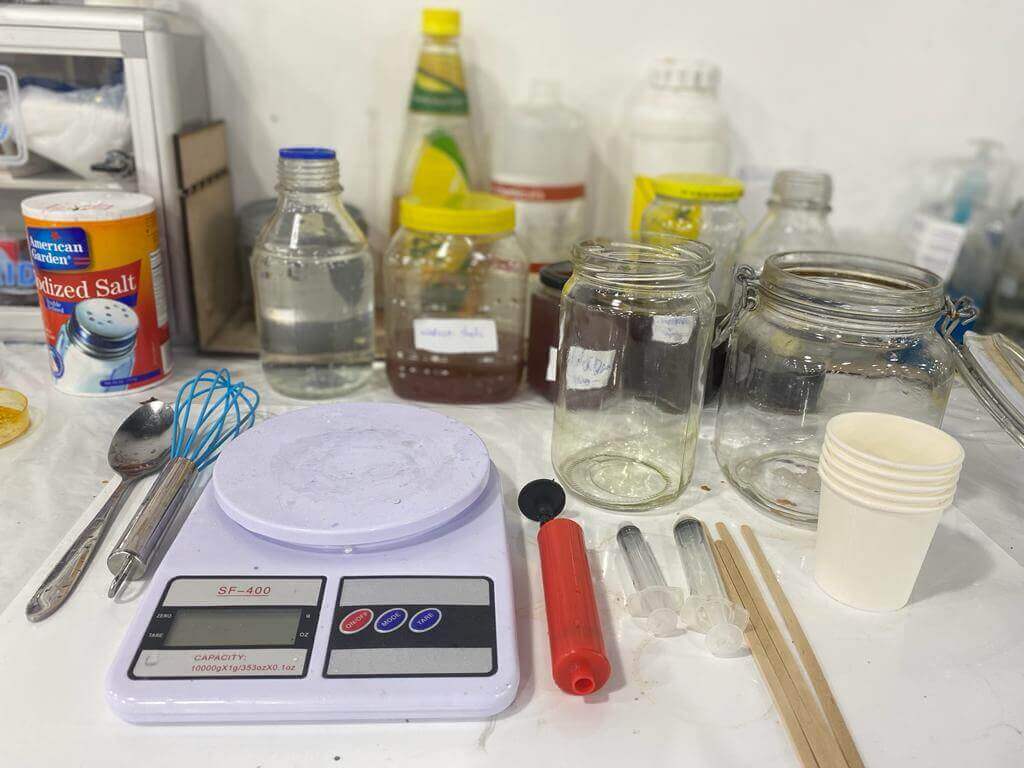
Gelatin¶
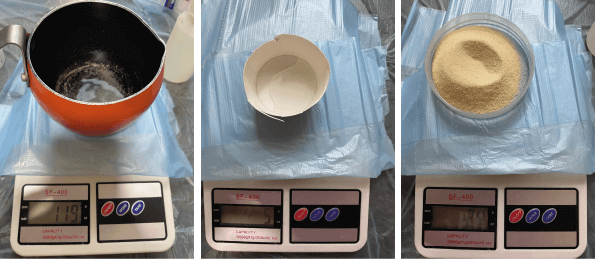
Gelatin Bio Resin¶
Prepare this recipe by collecting the ingredients necessary, to be found in the list below:
HERE I USED WATER
ingredients
* 48 gr Gelatin
* 8 gr glycerol
* 240 ml water or any material dye bath
Tools
* Scale
* Pot
* Spoon
* Small Cups to measure with
* A Frame to cast in
Measure your ingredients, Heat water and start adding the glycerol then the gelatin to the water, keep stirring until you get a jelly like texture then cast it quickly before it dries out
Results¶
I added 5gr of coffee to one of my recipes

TO CREATE TEXTURES ON THE BIO MATERIALS CAST YOUR MIXTURE ON
A TEXTURED PIECE THAT DOES NOT STICK TO THE BIO MATERIAL AND
CAN BE EASILY UNMOLDED (PLASTIC, RUBBER,...)
Properties¶
This material is rigid and has no flexibility, it shrieked a bit when dried but not much maybe around 2%, it can be used in packaging, decorations and accessories
NOTE: TRY TO KEEP YOUR MATERIAL IN PLACE UNTIL
COMPLETELY DRY AROUND 2 DAYS TO MAKE SURE IT COME
ALL STRAIT AND NICE
I tried to cover some dried flower petals and leaves with bio resin to make them earrings

Gelatin Bio Silicon¶
Prepare this recipe by collecting the ingredients necessary, to be found in the list below:
HERE I USED WALNUT DYE BATH FROM WEEK 4, ONE ORIGINAL AND ONE MODIFIED BY IRON

ingredients
* 48 gr Gelatin
* 24 gr glycerol
* 240 ml water or any materials dye bath
The more glycerol you add the more flexible your material gets
Tools
* Scale
* Pot
* Spoon
* Small Cups to measure with
* A Frame to cast in
I made a large frame using Acrylic Plastic I made it according to the amount of gelatin I am using, I calculated the gelatin in ML before starting and I used 240ml, to calculate the diminutions of the frame we will use the following formula: volume = length * Width * Hight
we know that V=240 and the height will be 10mm because I'm using a 5mm Acrylic board and I will glue two pieces on top of each other for the height so now we have 240ml = L * W * 10mm
After solving this equation we will have these values L= 219mm W= 109.5mm H= 10mm I doubled them after because I made two different casts
so I took the values and tried my best to stay as close as possible to them, I made the design using Illustrator and laser cut each part and glue them together after, I used the AB glue A is a transparent liquid glue and B is a hardener that makes the glue dry fast, to insure the mold is even and strait I used the wall edges and a ruler, so I put the part I want to glue against the wall and a ruler inside the frame and glue

Laser cutting settings¶
* material: 5mm Acrylic plastic
* power 120
* speed 80
Casting¶
I casted the original walnut in the first half then added the modified walnut on the other half, witch made a two layer material made from two different casts
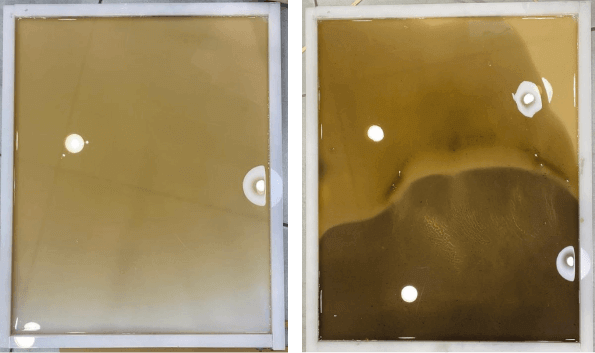
NOTE: TRY NOT TO TOUCH THE MATERIAL SO YOUN WONT
HAVE YOU FINGER PRINTS ALL OVER KEEP AROUND 2-3
DAYS BEFOR TOUCHING OR DEMOLDING
Results¶
![]()
properties¶
This material is flexible, not stretchy, almost transparent, it did not shrink at all when dried, this material can make a beautiful transparent bag :)
AGAR AGAR¶
Flexible Bio-Foil¶
ingredients
* 5 gr Agar
* 15 gr glycerol
* 250 ml Black Beans dye bath
The more glycerol you add the more flexible your material gets
Tools
* Scale
* Pot
* Spoon
* Small Cups to measure with
* A Frame to cast in
casting¶
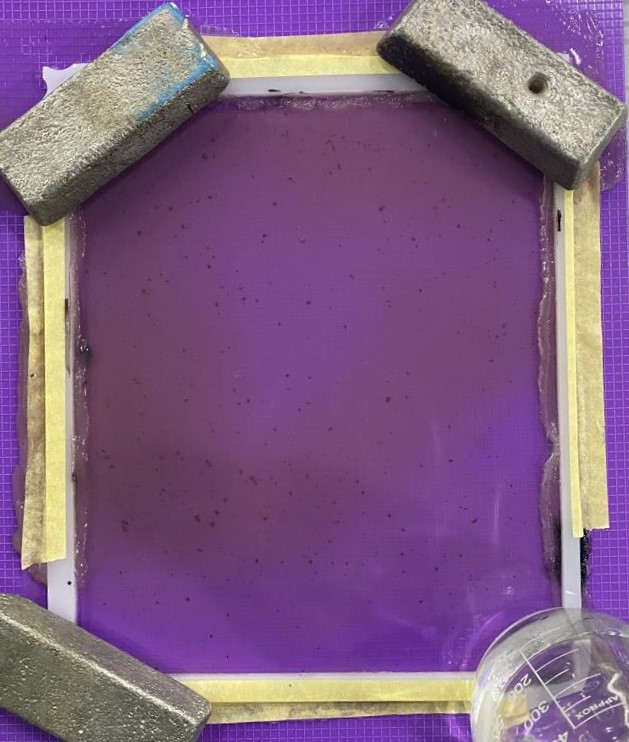
Results¶
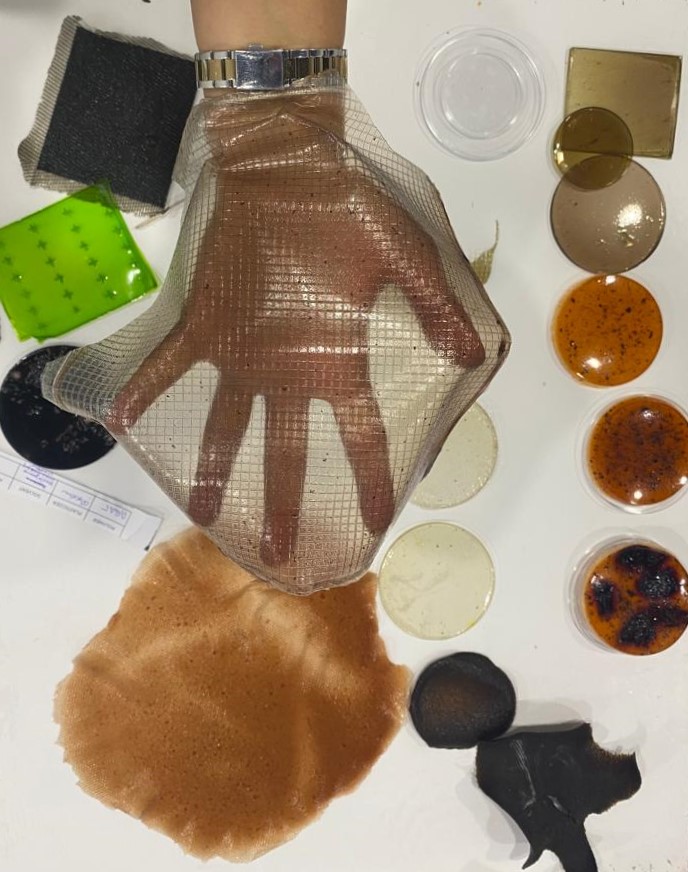
Properties¶
This material is very flexible, it shrieked when dried around 30%, it is fragile, and not stretchy, It needs around 2 days to unmold depending on the thickness and temperature
Stretch Bio-foil¶
ingredients
* 3 gr Agar
* 20 gr Gelatin
* 15 gr glycerol
* 400 ml Cabbage dye bath
Casting¶
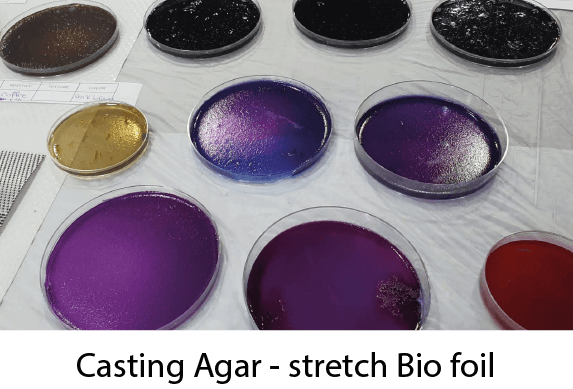
Results¶
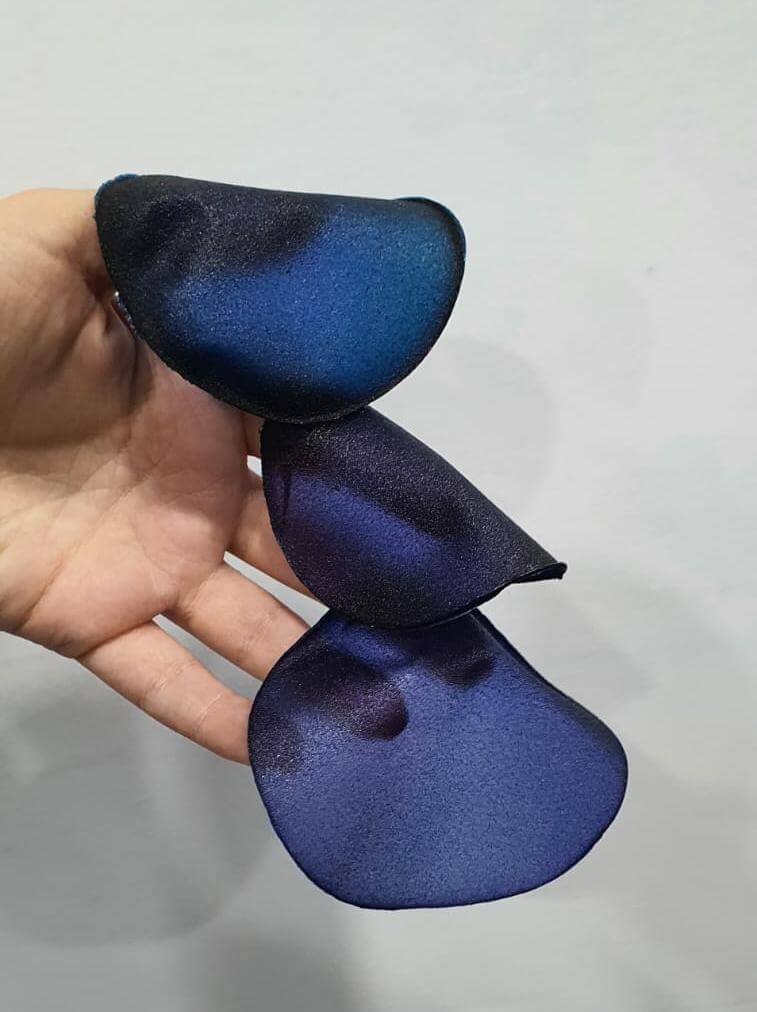
Properties¶
This material is very flexible, a bit fragile but not as much as the flexible bio foil, it shrieked around 30-40% when dried
Sodium Alginate¶
Flexible Bio-Plastic¶
ingredients
* 12 gr Alginate
* 20 gr glycerol
* 10 gr oil
* 200 ml water or any material dye bath
* You can add a few drops of food coloring
* 10 ml sodium chloride hydrate
* 100 ml water
We use sodium chloride with water to cure our paste after casting, the ratio it 1:2
Tools
* Scale
* Pot
* Spoon
* Small Cups to measure with
* A Frame to cast in
This material will shrink 50% when dry so it is better to be casting in think sheets
Preparing¶

More Colors¶

Results¶
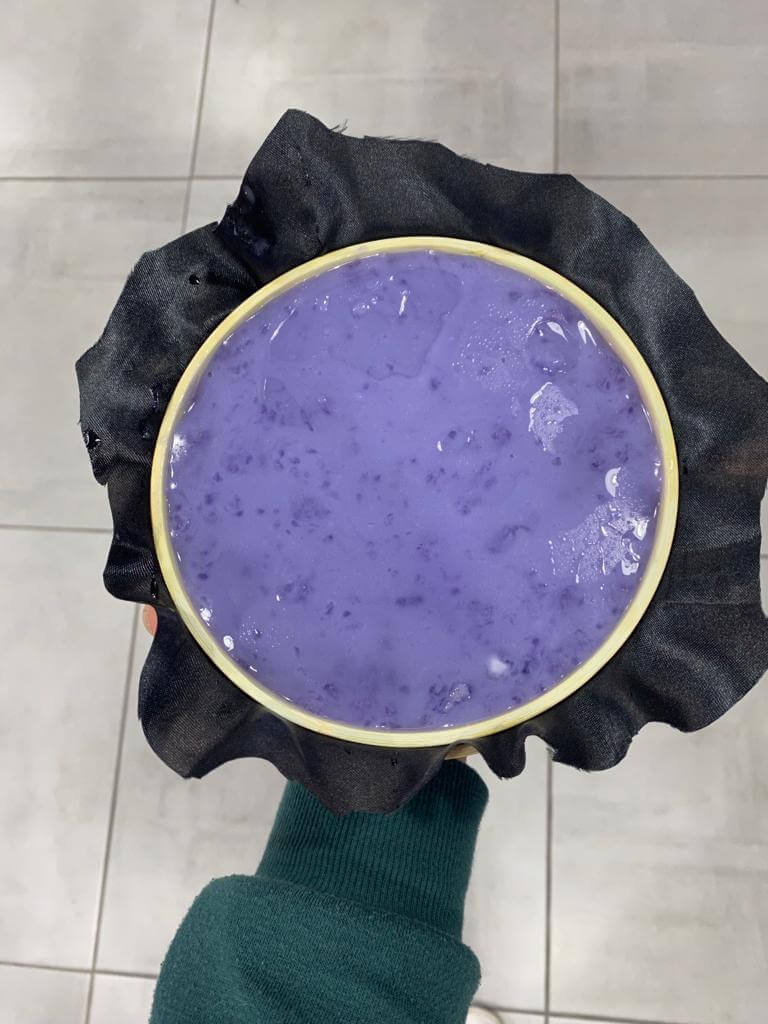
This material shrinks a lot around 50-60%, flexible but not very flexible, it is water proof and heat resistant
Bio Yarns¶
To make Bio Yarns put your Alginate paste in a syringe, prepare a Sodium chloride bath with 1:2 ratio to water, put the paste in the syringe and push it into the bath slowly, do not go too fast in order to get clean results

When Dry¶
Bio Yarns shrinks about 30% when dry the become solid but flexible, hard and not easy to break.
You can net, sew and braid them
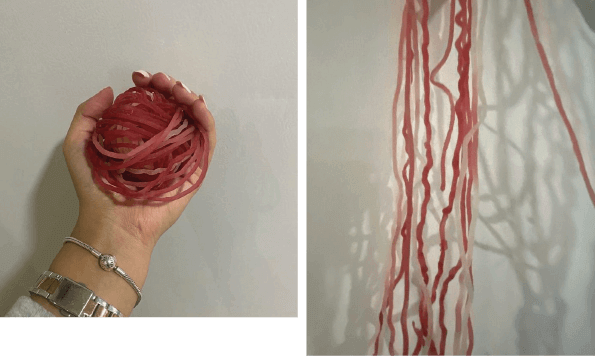
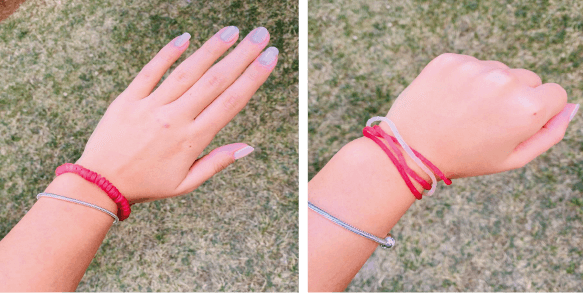
Properties¶
The yarns are flexible, a bit stretchy, do not break easily, they shrieked around 40-50% in size, you can make accessories, bags, tapestries, and even shits
Bio Printing¶
Bio materials can be 3D printed using specific printers similar to the one used for clay but since we do not have one we tried 3D printing using a syringe
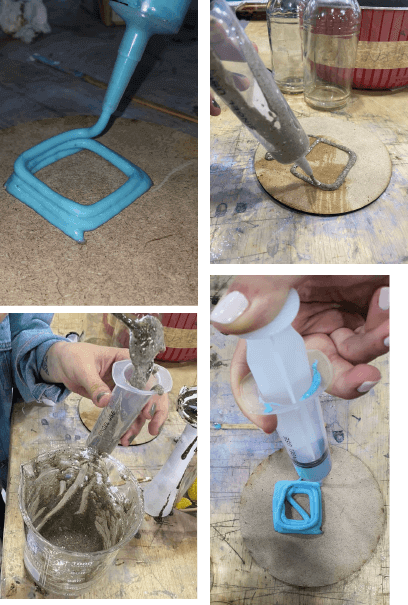
Kombucha¶
Kombucha also known as tea mushroom, tea fungus, or Manchurian mushroom, it is a traditional chines drink, Kombucha is produced by symbiotic fermentation of sugared tea using a symbiotic culture of bacteria and yeast (SCOBY) commonly called a "mother" or "mushroom
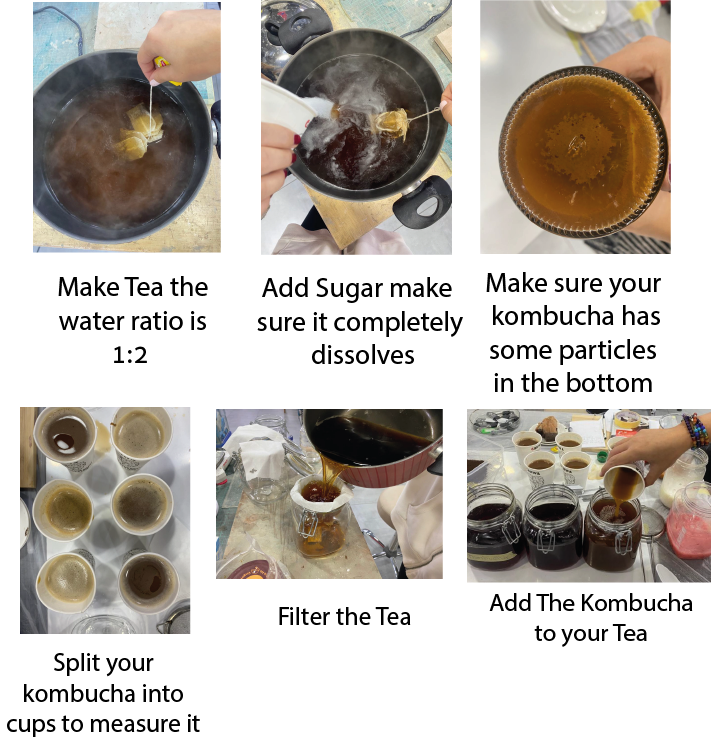
ingredients
* 12 cup of water
* 6 tea bags
* 1 cup of white sugar
* 6 cups Kombucha
- start with making the tea put the 6 tea bags in 12 cups of water and boil them
- then add sugar, leave them aside to cool down
- filter the tea in a jar
- add the kombucha
- cover the jar with breathable fabric and leave in a
Results¶
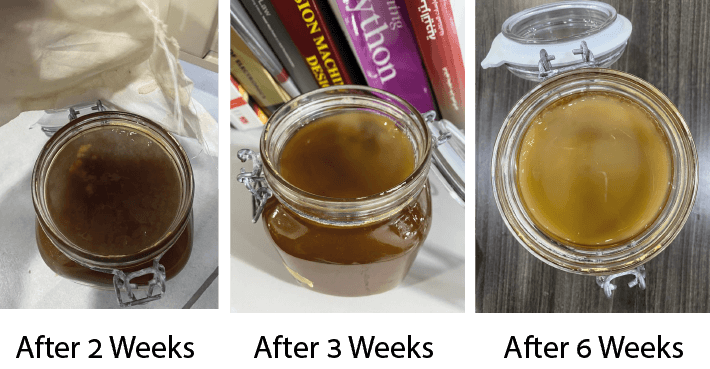
HARVESTING THE SCOBY¶

My Scoby is all grown now I got 3 Scobies and I am very exited about it and they need to be transferred into a bigger container
To Prepare the new home for the leather to grow follow the steps:
-
First Sterilize everything (I added alcohol then boiling water to my container )
-
Make The Tea:
* 3L of water * 4 tea bags * 300gr white sugar -
Let it cool down to room temp.
-
Add 100gr of vinegar

-
Add half cup of the original kombucha solution
-
Measure the PH it has to be around 3 if not add more vinegar
-
When it is all set harvest the scoby wearing cloves so you wont smear the baby
-
Cover with a cotton fabric and leave in a dark place for 2 months

After 1 Month¶
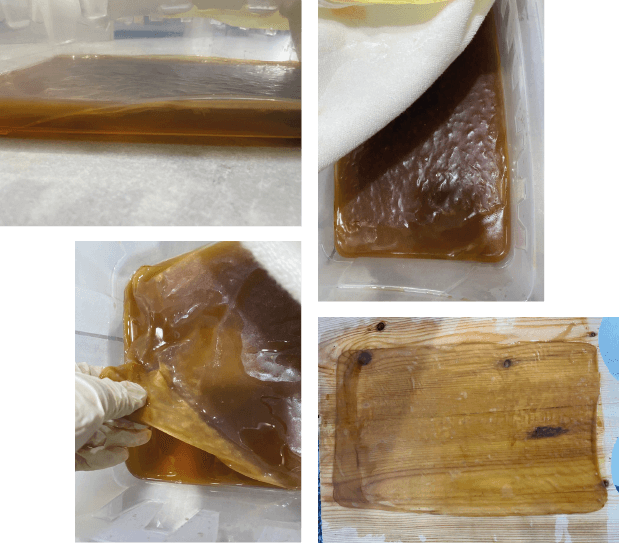
LEATHER IS STILL GROWING ....
Recipes¶
| Material pic | Material name | polymer | plasticizer | Solvent | Additive |
|---|---|---|---|---|---|
| Bio-Silicon | 48gr Gelatin | 24gr Glycerol | 240ml walnut dye bath | - | |
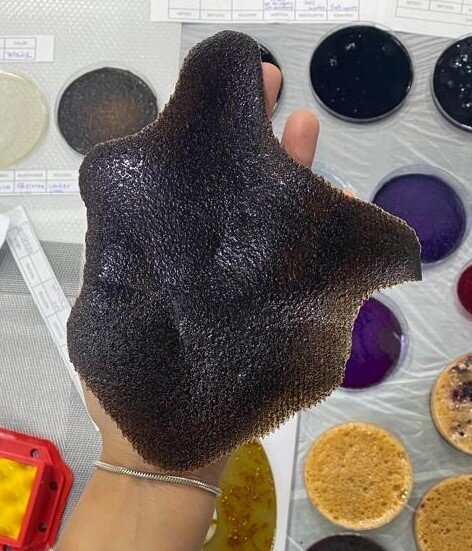 |
Bio-Resin | 48gr Gelatin | 8gr Glycerol | 240ml Water | 5g Coffee |
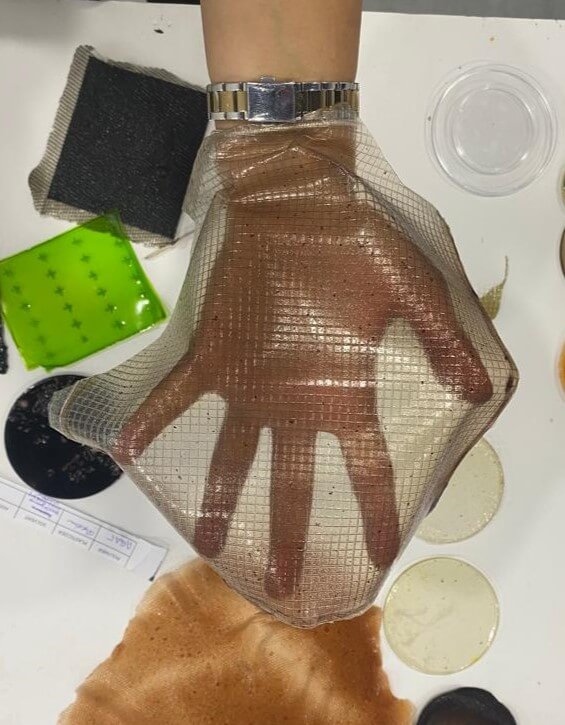 |
flexible-Bio sheet | 5gr Agar | 15gr Glycerol | 250gr Black Beans Dyebath | - |
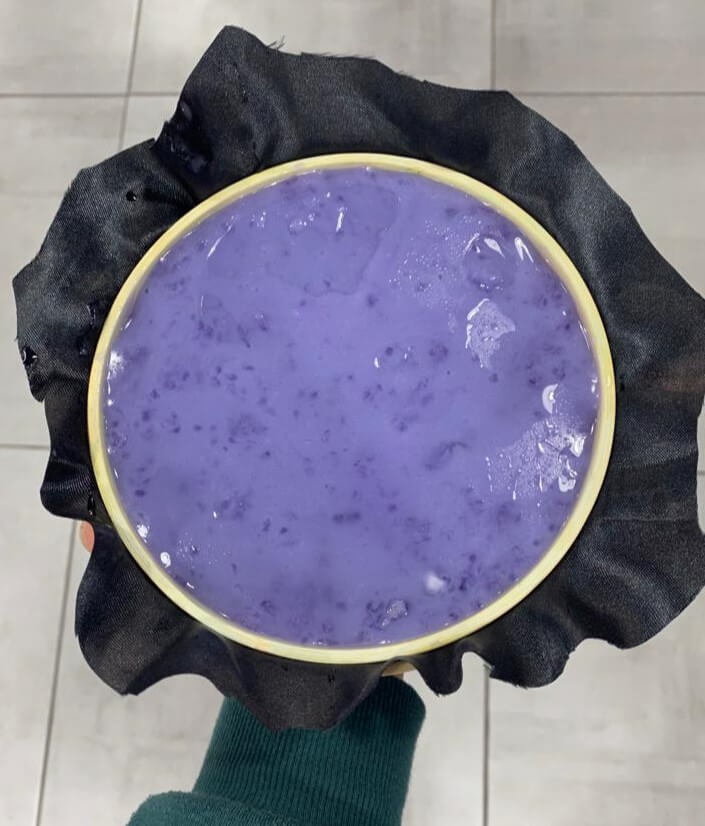 |
Flexible-Bio Plastic | 12gr Sodium Alginate | 20gr Glycerol & 10gr oil | 200ml Cabbage Dyebath | food coloring & curing agent |
Tools¶
- [slides](http://class.textile-academy.org)